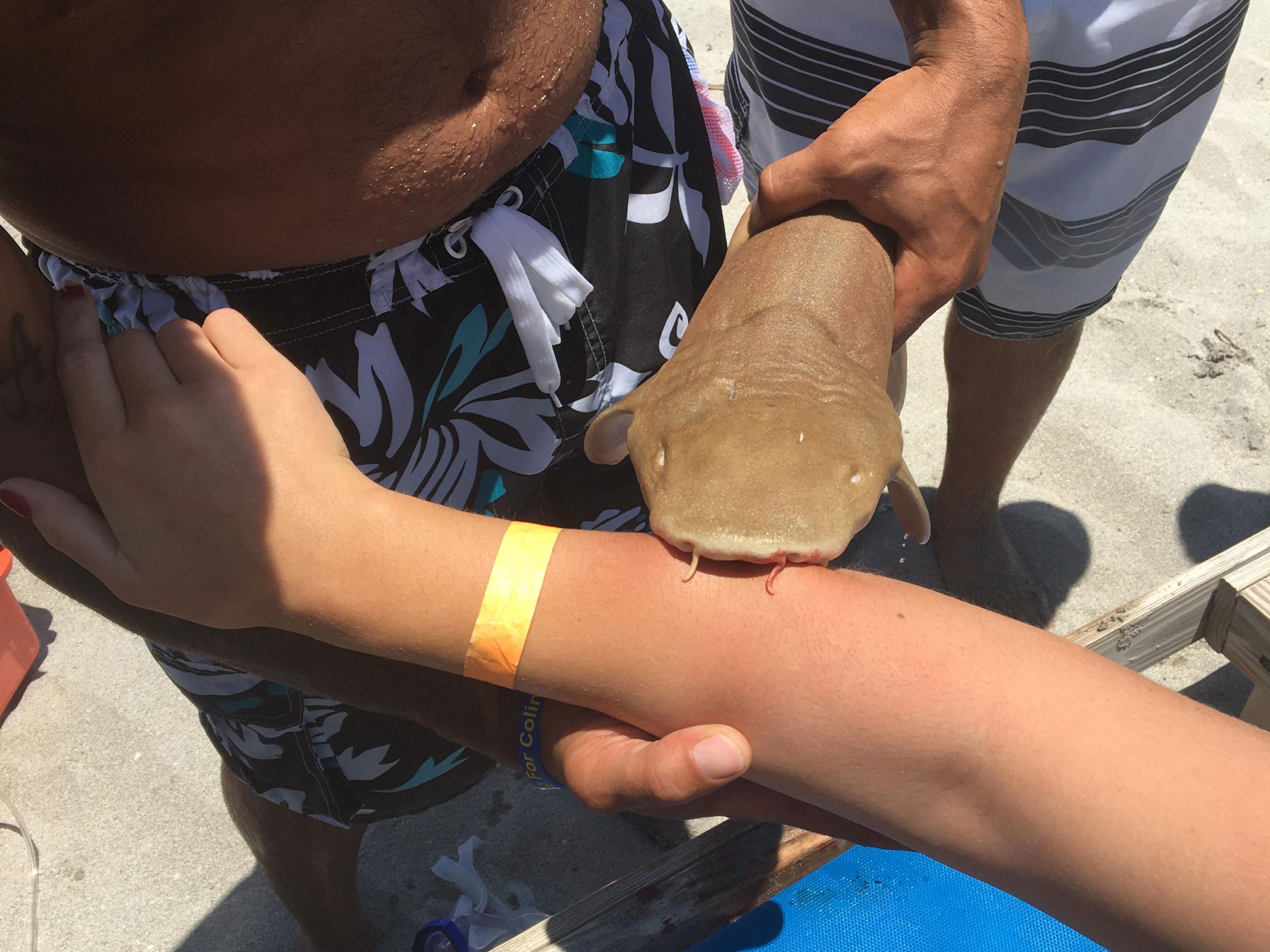Woman taken to Florida hospital with shark still attached to her arm
People were unable to remove the small nurse shark even after it died

A 23-year-old woman was taken to hospital with a two-foot long nurse shark still attached to her arm when it refused to release its bite – even after it died.
The woman reportedly emerged from the sea with the shark attached to her right forearm in Boca Raton, Florida.
By the time paramedics arrived at the scene the shark had died, but a splint board was used to support its weight as its jaw was still clamped around the woman’s arm.
The woman, whose name has not been released, was taken to Boca Raton Regional Hospital.
Boca Raton Fire Rescue Services said the woman was in a stable condition when she was transported to the hospital.
According to the Sun Sentinel, an 11-year-old boy named Nate Pachter claimed that he and his cousin had been snorkelling in the same area where the woman and a group of people had been in the sea.
He claimed he saw the group “messing” with the shark and holding it by its tail.
"Knowingly or not, people swim near nurse sharks every day without incident," a spokesperson for the National Park Service told the newspaper. "Attacks on humans are rare but not unknown and a clamping bite typically results from a diver or fisherman antagonizing the shark with hook, spear, net or hand.”
Nurse sharks mostly do not attack humans, though they have been known to bite defensively if stepped on or “bothered by divers who assume they’re docile,” according to the National Geographic. They can grow up to 14 feet and have strong jaws filled with thousands of small but razor sharp serrated teeth.
Subscribe to Independent Premium to bookmark this article
Want to bookmark your favourite articles and stories to read or reference later? Start your Independent Premium subscription today.

Join our commenting forum
Join thought-provoking conversations, follow other Independent readers and see their replies